
Various embedded systems, portable devices, consumer electronics, and industrial applications benefit from the ILI9341-controlled LCD modules. An ILI9341-controlled LCD module in a PCBA (printed circuit board assembly) mounted with an LCD screen and ILI9341-controller. Read on to learn everything about an ILI9341-controlled LCD module!
ILI9341-Controlled LCD Module
The ILI9341 is a popular controller used in LCD modules with TFT (Thin-Film Transistor) technology. An ILI9341-controlled LCD consists of an LCD screen and a PCB (printed circuit board) or flexible PCB. The LCD screen is surface mounted on a rigid PCB or flexible PCB.
An ILI9341 controller has a resolution of 320px x 240px and a color depth of up to 16-bit or 18-bit colors. Regarding interfaces, it supports SPI (serial peripheral interface) and 8-bit or 16-bit parallel interfaces.
The rigid PCB or flexible PCB that mounts the LCD screen often also includes the ILI9341 controller chip, necessary capacitors, resistors, and connectors.
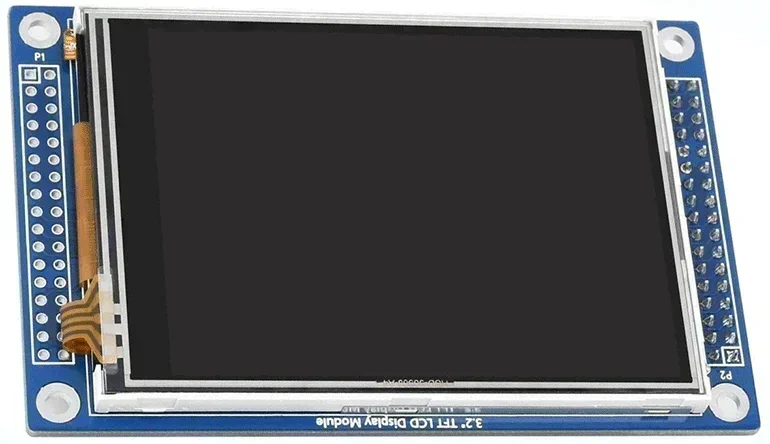
If the LCB module uses a flexible PCB rather than a rigid PCB, it saves more space and weight.

On Aliexpress, Amazon, or other platforms, you can buy ILI9341-controlled LCD modules for your DIY project at affordable costs.
However, if you want to develop your business device with an LCD screen, you will need to custom design the PCB to mount the components and LCD screen and match your device requirements.
LI9341 LCD Supported Communication Protocols
The ILI9341 LCD controller supports the parallel 8-/9-/16-/18-bit bus interface and the 3-/4-wire SPI (serial peripheral interface).
Let's examine each of them:
The parallel bus interface incorporates the MCU Parallel Interface and the RGB Parallel Interface.
While using the MCU parallel bus interface, the display gets data from the MCU, stores it in its internal DDRAM memory, and only then displays it. While using the RGB parallel bus interface, the display gets the RGB data from the MCU and displays it immediately. The RGB parallel bus interface is usually chosen for high-performance applications like playing video.
However, it's harder to implement and requires the SYNC, VSYNC, DCLK, and DE wires to be connected to the display to indicate when and where to display the RGB data.
The SPI is a synchronous, full-duplex communication protocol used to transfer data between a controller device (usually a microcontroller) and one or more agent devices (ILI9341-controlled LCD(s)).
The difference between the 3-wire and 4-wire SPI is that the 3-wire version only allows simultaneous data transfer in one direction, and the 4-wire SPI allows simultaneous data exchange between both devices (works in full-duplex mode).
To display something on the ILI9341-controlled LCD, the master first selects the desired display by pulling its CS line low. It then generates the clock signal pushed using the SCLK line and transmits data to the display using the MOSI line. When the transmission finishes, the master deselects the display by pulling CS high.
PCB Boards for ILI9341-Controlled LCD Modules
The ILI9341-controlled LCDs can benefit from a variety of open-source PCB boards.
For example, let's examine the PCB board for the 2.8-inch ILI9341-controlled TFT LCD with a 40-pin connector. The PCB itself has the places allocated for soldering the display connector, 2 ICs, and various SMD elements. It enables the display to utilize the 4-wire full-duplex SPI and the 8-bit 8080-type parallel interfaces while also allowing the user to benefit from employing the display's touchscreen.
The images of the PCB board for the 2.8-inch ILI9341-controlled TFT LCD with a 40-pin connector are shown below. The first image demonstrates the Gerber PCB file opened in the CAD software.
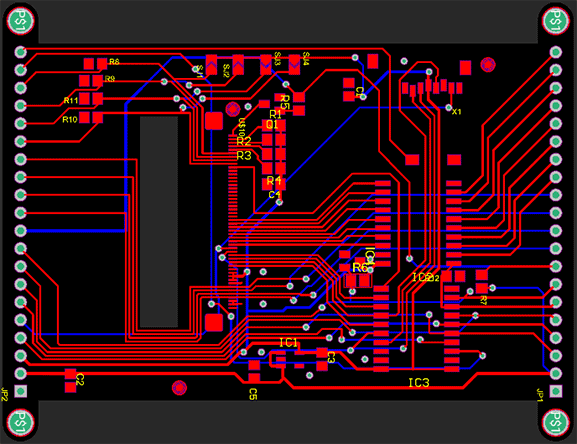
The second image illustrates the 3D rendering of the finished PCB without any components soldered on it.
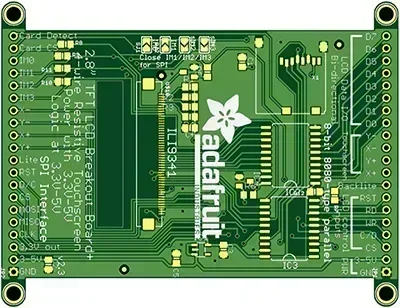
Additionally, let's look at the open-source PCB board by Adafruit for the 3.2-inch ILI9341-controlled TFT LCD. It is designed to accommodate a 3.2-inch LCD.
The PCB features a soldering pad for the 50-pin LCD connector. Like the previous one, this PCB board enables the display to utilize the 4-wire full-duplex SPI and the 8-bit 8080-type parallel interfaces while also allowing the user to benefit from employing the display's touchscreen.

Below, you can see the images of the PCB board for the 3.2-inch ILI9341-controlled TFT LCD with a 50-pin connector.

As you might've noticed, both PCBs use wide power and ground traces to minimize voltage drops and noise. However, these LCD PCBs are used for DIY projects.
In a business project, custom LCD PCBAs are needed, and you need to design it or let your one-stop PCBA manufacturer design and produce it for your project.
For example, PCBONLINE does a PCBA box-build assembly project for IoT wall-breaking machines, where a custom LCD screen PCBA is used as the user interface. PCBONLINE designs and brings out the one-stop PCBA and product assembly, including the LCD screen module. It matches the other circuits of the wall-breaking machine, and the users can see the states and specs of the machine from it.
DIY Projects Using ILI9341-Controlled LCD Modules
Now that you know what interfaces these LCDs support, let's look at them in action in DIY applications. However, DIY projects are only for fun or used by yourself. To develop a project with an LCD screen, you will need to work with a professional PCBA manufacturer who manufactures the PCBAs and box-builds and can also do the development according to your initial idea.
Berry Racer - a Game Programmed in Arduino and Played on a Custom PCB
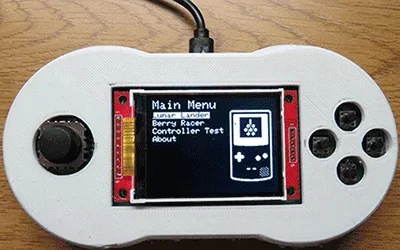
The "Berry Racer - a Game Programmed in Arduino and Played on a Custom PCB" project is a handheld DIY game console programmed using Arduino's software. It benefits from a custom printed circuit board (PCB), 2-axis joystick, 2.2-inch 320px x 240px ILI9341-controlled TFT LCD connected to the MCU via the SPI, and other components. The custom PCB utilized in this project is shown below.

Portable Raspberry Pi Game Console
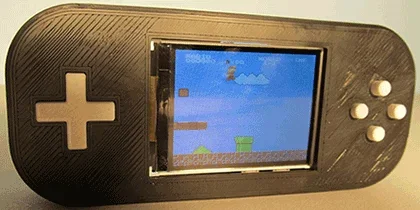
Portable Raspberry Pi Game Console is a DIY device that utilizes the Raspberry Pi Zero, 320px x 240px ILI9341-controlled TFT LCD connected to the RPI via the SPI bus, battery charging circuit, and other components. It allows the user to run the retro games on it using the RetroPie emulator.
DIY Electronic Shelf Label Management System V2.0

The "DIY Electronic Shelf Label Management System V2.0" project is a DIY electronic shelf label that utilizes the ESP8266 and the 320px x 240px ILI9341-controlled TFT LCD connected to the ESP via the SPI that displays images sent to the ESL in the encrypted UDP packets over the local network using one of two available desktop applications.
Apple Pocket Pi - 3D Printable Retro Handheld Games Console

Apple Pocket Pi - 3D Printable Retro Handheld Games Console is a DIY handheld gaming console with a fully 3D printed shell and buttons that benefits from utilizing the Raspberry Pi Zero 2 microcomputer, a high-end version of the 320px x 240px ILI9341-controlled TFT LCD connected to the RPI via the SPI bus, custom PCB, 3000mAh battery, and other components. This console can emulate a wide range of retro game consoles, including N64, Dreamcast, PlayStation, PSP, and old Nintendo consoles.
The photo of the custom PCB utilized by this console is shown below.

Arduino Thin Client
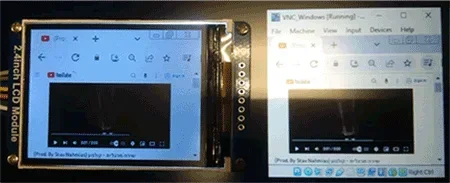
The Arduino Thin Client project is an ESP32-based thin client that employs the 320px x 240px ILI9341-controlled TFT LCD connected to the ESP via the SPI. The device functions as a remote VNC (virtual network computing) display for machines with various operating systems.
Retro Arcade Clock - Arduino
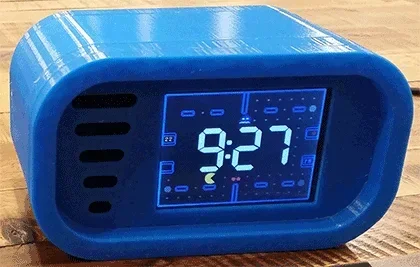
The "Retro Arcade Clock - Arduino" project is a clock that utilizes the Arduino Mega and the 320px x 240px ILI9341-controlled TFT LCD connected to the Arduino via the 16-bit parallel interface.
The clock offers the following modes:
2. In the Library Manager, type "LiquidCrystal" and search
3. Click on "LiquidCrystal" by Arduino library and then click "Install"
Now you are ready to go. Let's check this LCD display using a simple Arduino code.
- Arcade Clock - DK Mario, Space Invaders & Pacman animation;
- Pacman Clock - Interactive Animated Pacman game with clock functions;
- DK Clock - Interactive Animated DK game with clock functions;
- Tumble Ghost - Animated Pacman Ghost game based on Flappy Bird.
Surrounding Sounds Feedback Box-SSFBB (made With Teensy)

The "Surrounding Sounds Feedback Box-SSFBB (made With Teensy)" is a DIY project that utilizes the Teensy 3.2 development board, two 2.2-inch 320px x 240px ILI9341-controlled TFT displays connected to the Teensy via the SPI bus, analog indicator, and other components. It has enough power to perform real-time audio calculations and smoothly update FFT.
Breadboard RetroPie
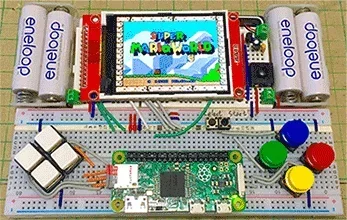
The "Breadboard RetroPie" is a DIY gaming console built entirely on a breadboard. It benefits from utilizing the Raspberry Pi Zero microcomputer, the 320px x 240px ILI9341-controlled TFT LCD connected to the RPI via the SPI bus, buttons, and other components.
Midbar (Raspberry Pi Pico Version) V2.0
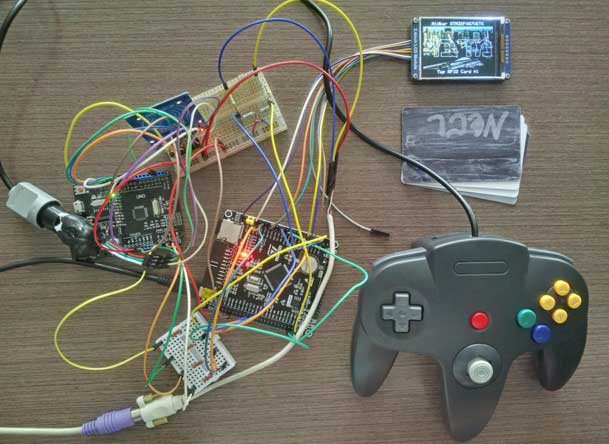
The Midbar (Raspberry Pi Pico Version) V2.0 is an advanced hardware data vault that utilizes the Raspberry Pi Pico microcontroller, RFID card reader, a high-end version of the 320px x 240px ILI9341-controlled TFT LCD connected to the RPI via the SPI bus, as well as the USB keyboard, rotary encoder, and two buttons as the input devices. It enables the user to store login credentials, credit card details, phone numbers, and notes in the Raspberry Pi Pico internal Flash memory.
One-Stop LCD Screen Module and PCBA Box-Build Manufacturer - PCBONLINE
An LCD module is an interface screen. For DIY projects, you can buy finished modules directly from those E-commerce platforms. To make consumer electronic devices with an LCD screen, you will need custom PCBA manufacturing and box-build assembly, and you can work with the one-stop PCBA manufacturer PCBONLINE.
PCBONLINE is a PCBA source factory manufacturer founded in 1999. It has two large advanced PCB manufacturing bases, one PCB assembly factory, an R&D team, and stable supply chains. By working with PCBONLINE, you can have PCBA and final product box-build assembly manufactured under one roof, including the LCD screen module of the device.

PCBONLINE provides one-stop PCB fabrication, module assembly, component sourcing, PCBA value-added, and box-build assembly from prototypes to bulk production.
PCBONLINE has rich R&D experience for IoT home appliances, wireless communication devices, etc, where an LCD screen may be used.
Has powerful electronics manufacturing capabilities to meet any of your project's custom requirements, and all testing and molds are also provided.
High-quality PCB fabrication, PCB assembly, and box-build assembly certified with ISO 9001:2015, IATF 16949, RoHS, REACH, UL, and IPC-A-610 Class 2/3.
Offer one-on-one engineering support throughout your project and provide free design for manufacturing, assembly, testing, and excellence (DFM, DFA, DFT, and DFX).
If you are an original equipment manufacturer, business maker, or research institute, you will benefit from working with PCBONLINE due to our hassle-free and cost-effective PCBA contract manufacturing. To get a quote from PCBONLINE, please email info@pcbonline.com.
Conclusion
The ILI9341-controlled LCDs can work in parallel mode, significantly improving the frame rate. This blog introduces what an ILI9341-controlled LCD module is and shows its applications in DIY projects. You can buy finished LCD modules from E-commerce platforms for DIY projects. However, if you want to integrate it into your business project, you will need to design a custom PCB for it. PCBONLINE not only designs and manufactures the LCD PCBA module but also the entire device, including the enclosure. Feel free to contact PCBONLINE by email or chat with us from the online chat window.
PCB assembly at PCBONLINE.pdf




